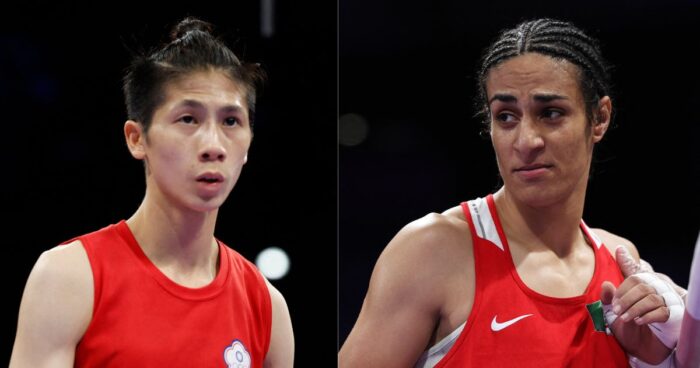Aug 09 2024
The Gender Boxing Hubub
 Both Lin Yu-ting of Taiwan and Imane Khelif of Algeria earned medals in female boxing competition at the 2024 Olympics. This has caused a controversy because both boxers, according to reports, have some form of DSD – difference of sex development. This means they have been caught up in the culture war regarding trans athletes, even though neither of them is technically trans. What is the science here and how should sporting competitions like the Olympics deal with it?
Both Lin Yu-ting of Taiwan and Imane Khelif of Algeria earned medals in female boxing competition at the 2024 Olympics. This has caused a controversy because both boxers, according to reports, have some form of DSD – difference of sex development. This means they have been caught up in the culture war regarding trans athletes, even though neither of them is technically trans. What is the science here and how should sporting competitions like the Olympics deal with it?
Both female boxers have XY chromosomes (according to the IBA). For some people this means they are male, but as is often the case, it’s more complicated than that. Let’s quickly review some basic biology regarding biological sex to put this into perspective.
Male-Female develop does begin with sex chromosomes: XX for female and XY for male. Specific genes on the X and Y chromosomes affect sexual development, partly through production of sex hormones such as estrogen and testosterone. XX individuals develop ovaries and eggs, produce high estrogen and low testosterone, and develop anatomically along a typical female path with uterus, vagina, and with puberty, female secondary sexual characteristics. XY individuals develop gonads and sperm, make high testosterone, and develop along a typical male path with descended testes, penis and with puberty, male secondary sexual characteristics. All of this is part of biological sex. But also there is the potential for differences every step of the way. In addition, there are other chromosomal arrangements possible. By some estimates about 1 in 300 people have some difference of sex development.
Yu-ting and Khelif are XY females. How does this happen? One possibility is that they have an incomplete Y chromosome, and may specifically lack the SRY gene which is necessary for male genital development. You can also have XY females who do not produce testosterone. Another possibility is complete androgen insensitivity syndrome (CAIS) in which XY individuals make testosterone but don’t have functioning receptors, so they develop as if they do not have testosterone (the default developmental pathway without testosterone is female). They typically have undescended tested, no uterus, but female external genitalia and female secondary sexual characteristics.
There are also XX females who are maculinized because they produce more androgens than is typical, such as in congenital adrenal hyperplasia. They may have ambiguous genitalia, but not always and may simply be identified female at birth. When they go through puberty, however, they can develop a deeper voice, become more hairy, and also develop more muscle mass and greater strength than a typical female.
The bottom line is that human biological sex is clearly not strictly binary. But the Olympics, like many sporting organizations, is strictly binary. How do we make these things work together? I think most people will agree we want sporting competitions to be fair and meaningful, but there can be disagreement on exactly what this means. Further, biological sex is just one of many parameters that can be affected by genetics and development that can impact sporting performance.
One question is – how much testing are we going to put athletes through to determine if they may have any genetic or developmental advantages related to sexual development? If we want at least a reasonably clear picture we would need to test for chromosomes, hormone levels, and receptor sensitivity. Such testing would be invasive and expensive, but nothing less would really show the complete picture. Also, the results would be along a spectrum, which means we would have to draw somewhat arbitrary dividing lines. Further still, who has the burden of proof to show that any particular biology has inherent advantages in any particular sport? And of course, the answer would differ for every sport – boxing and archery would not have the same biological advantages.
If we are going to open this can of worms, would it be consistent to also consider other biological factors. Heritage also impacts sports-relevant biological features. African Americans, for example, (both male and female) have higher average muscle mass and strength than Caucasians or Asians. The sex and race streams often cross, as AA women are more likely to be accused of being “too masculine”.
I am not proposing any specific answer here, just laying out the inherent complexity. There is not one right or wrong answer, just trade-offs. This is because there is an inherent disconnect between the binary world of sports and the non-binary world of human biological sex. Should we just exclude the estimated 26 million people in the world with DSD from competitive sports? Should we do very thorough biological assessments of athletes and divide them into leagues accordingly? Or do we do something in the middle, balancing various considerations to create an imperfect system that’s reasonably fair and functional?
I do think there is one thing we shouldn’t do – turn the whole thing into a culture war rife with pseudoscience and intolerance.






